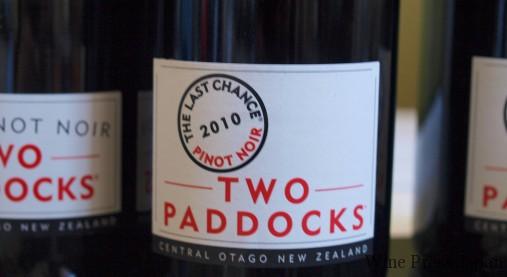ネッド・グッドウィン MW のスペシャル・コラム 第8回 〜ブルゴーニュの畑:再評価の必要性〜
04/01

<ブルゴーニュの畑:再評価の必要性>
< Reevaluation of Vineyards in Burgundy: a necessity or otherwise / the original text is following this translation >
読者の皆さんの中には、ブルゴーニュのブドウ畑の再評価と格付けの見直しがどうも必要らしい、という話題を耳にした人も多いだろう。あれやこれやの議論は、2012年、ニュージーランドのクイーンズタウンで開催されたセントラル・オタゴ・ピノ・ノワール・セレブレーションで、まさしくこれをテーマにした興味深いプレゼンテーションが行われたことで、一時的には収束した。私はイベントのゲストスピーカーではあったが、この白熱したトピックのディスカッション・パネラーではなかったので、悠々とノートをとりながら、この公開討論を観客として聞くことができた。
今回は、この2年前の討論から何を学んだかを書こうと思う:2年前程ではないにせよ、未だに耳に痛い話であることに変わりはない。言ってしまえば、主にアジアでの新しい需要でワインが急速に「商品化」されることで、神聖と崇め奉られているワインの数々に人々は絶えず熱狂しなくてはならなくなった、ということ。高級なファッションブランドのように誰もが欲しがり、しかも究極的に稀少ときている。ブルゴーニュの典型例は、言うまでもなくドメーヌ・ド・ラ・ロマネ・コンティ。多くのワイン消費者(向学心のあるなしかかわらず)には知られていないことだが、これらワインの名声とブランド価値は、文化と土壌と畑の立地、言い換えれば「テロワール」にどっぷりと浸かりきっているというのが事実。つまりワインの評価は、畑の格付けと所有権という気難しい性質のものなのだ。ややこしく聞こえるかもしれない。だが、特級や一級に分類されるという栄光さえ掴めば、もはや市場での成功は約束されているということ。だから、格付けを上げるかどうかという問題は歴史とビジネスの両方の分野に影響する、それに付随する社会政治的波紋もまぬがれない。
話を戻そう。見所の多いブルゴーニュの造り手、ティボー・リジェ・ベレールも、パネリストの一人だった。彼の家は何世代、何百年にも渡ってコート・ドール中に畑を所有してきた一家であり、ヴォーヌ・ロマネとニュイ・サン・ジョルジュの一帯がその要である。リジェ・ベレールは、特級への公式な格上げにふさわしいと誰もが思うような、特定の一級畑にまつわる法的なしがらみについて、面白い意見を述べていた。もしもそんなことが起これば、言わずと知れた法的、経済的、哲学的に厄介な問題が溢れ出して、予想もつかないような結果を招くだろうとほのめかしたのだ。
リジェ・ベレールは、「1936年、名高いコミューンにある、かの有名なレ・サン・ジョルジュの畑の格付けは、政治的、社会的、経済的理由が背後にあった異例の処置だった」と話した。ニュイ・サン・ジョルジュはたいてい鈍い石頭のような印象を受けるワインだが、レ・サン・ジョルジュはもっと洗練されていて、熟成する価値がある。リジェ・ベレールによれば、市長と、尊敬を集める造り手のアンリ・グージュの両者は、レ・サン・ジョルジュに区画を持っていたが、地元のコミュニティで嫉妬を買うことを恐れたがために、その畑が特級に格付けされることを望まなかったという。
もしブルゴーニュが、あれほどのコミューンとブドウ畑の複雑なタペストリーでなければ、このような問題は浮上しないだろう。ブルゴーニュでは、畑は地図上で細かく区分けされていて、地質も構造も綿密な文書化がなされている。もっとも偉大な生産者は崇敬の対象だ。どのブドウ畑も、1930年代に詐欺行為の抑制を目的に作られた階級、つまりアペレーション・システムという法のもとにある。アペレーションは品質の指標にはなるものの、当時も、そして現在も、それは品質を保証するものではない。それでもこのシステムは、消費者がワインそのものの品質を、歴史、名声、評判、値段と同一視するよう働いてきたのだ。
いくつかの畑は、絶えず最高品質のワインのための最高品質のブドウを生産し、その気迫を見せつけてきた訳だが(少なくとも、賢明な造り手の元では)、中には過大評価だとみなされている畑も存在する。例えば、ジュヴレ=シャンヴェルタンの特級、シャルム=シャンベルタンは、同じコミューンの一級、すぐ近くのクロ・サン・ジャックのトップワインより、出来が悪いことがままあるように。
予期していた通り、この討論ではっきりとした結論が出たわけではなかったが、議論には活気があり学ぶところの多いものだった。ハイライトは、巧みに考えぬかれたテイスティング。格上げの有力候補である一級畑のワインたちが、全て2006年ヴィンテージで提供された。多くが、畑の再評価の必要性を強く感じさせるワインだった。
しかし結局のところ、パネラーの一人であったワイン・スペクテーターのマット・クレイマーの言葉を借りるなら、ブルゴーニュ崇拝のあまり「このようなイベントを神聖化しすぎないように気をつけなければならない。」 木を見て森を見ずということになりかねないのだ。そしてまた一方で、ピノ・ノワールへの崇敬、ひいてはブルゴーニュへの崇拝がなければ、そもそもこのようなイベントが開かれることはないのだけれど。
(text by Ned Goodwin MW / translated by Ai Nakashima)
THE ORIGINAL TEXT
< Reevaluation of Vineyards in Burgundy: a necessity or otherwise / by Ned Goodwin MW>
Many readers may have caught word of the recent debate over the purported need for vineyard re-evaluation and reclassification in Burgundy. This chatter was punctuated in 2012 by a fascinating presentation on Burgundy and this very topic, at the Central Otago Pinot Noir Celebration, held in Queenstown, New Zealand. While I was a guest speaker at the Celebration, I was not part of the panel discussing this heated topic and thus, had a cherished moment of freedom in the audience to take notes.
In this piece, I reflect on what I learnt two-years ago; as poignant today as then, if not more so. After all, the heightened commodification of wine that is driven largely by new demand in Asia, is symptomatic of the incessant buzz over hallowed wine names, as coveted as established fashion labels, yet infinitesimally more rare. The most obvious Burgundian example is surely Domaine de la Romanée Conti. Unbeknownst to many wine consumers aspirational or otherwise, these names and their branded equity are steeped in culture, soil and site, or terroir. Subsequently, their reputation hinges on the fractious nature of vineyard classifications and ownership. Complicated, yes. However, the lustre of vineyards classified as Grands or Premier Crus is intrinsic to their commercial success on such a stage. Thus, whether a vineyard is deserved of a more esteemed classification or not, reverberates at both historical and commercial levels, not to mention the socio-political repercussions of all that is entailed.
Now back to the panel. Thibault Liger-Belair, a dynamic Burgundy producers was among the panelists. His family have owned vineyards across the Côte d’Or for generations, going back hundreds of years, with vineyards in and around the communes of Vosne-Romanée and Nuits Saint Georges the soul of his holdings. Liger-Belair offered fascinating insight into the legal rumbling over certain Premier Cru vineyards that for many, should be elevated in classification and promulgated as Grand Cru sites. Liger-Belair inferred that were this to happen, the proverbial legal, economical and philosophical cans of worms would be pried loose with unpredictable consequences.
Liger-Belair commented that the ‘(de)classification of the famed les Saint Georges vineyard in 1936, situated in the eponymous commune, was an anomaly due to political, social and economical reasons’. While the wines of Nuits are often rather stolid and four-square, les Saint Georges is more refined and highly ageworthy. According to Liger-Belair, both the mayor of the town and the esteemed producer, Henri Gouges, owned parcels in les Saint Georges albeit, did not want the vineyard classified as Grand Cru due to the fear of instigating jealousy among the community. Similar stories in other communes abound.
Contentious issues like these would not arise if Burgundy were not the complex tapestry of communes and vineyards that it is. Burgundy’s vineyards are carefully designated by cartography, its soil types and structures well documented; its greatest producers revered. Each vineyard is legally bound to a hierarchy, or an appellation system, initially constructed in the ’30’s to mitigate fraudulent practices. While the appellation designations imply quality, they did not guarantee it necessarily back then and nor do they today. Nevertheless, this system has welded consumer perceptions of quality to history, names, popularity and pricing.
While some vineyards have proven their mettle (at least in the hands of judicious producers) for consistently yielding top quality grapes for high quality wine, others are considered by some to be over-rated. The Gevrey-Chambertin Grand Cru, Charmes-Chambertin, is more often than not a lesser wine than top examples from nearby Clos Saint Jacques, a Premier Cru vineyard in the same commune, for example.
As could be expected, while there were no concrete conclusions drawn at the Conference, the discussion was lively and educational. The highlight was an astutely constructed tasting of wines, all from 2006, representing some of the top Premier Cru vineyards considered to be contenders for elevation. Many made a strong case for re-evaluation.
However, when all was said and done….and to paraphrase the Wine Spectator’s Matt Kramer, another guest of the conference: ‘one has to be careful about not having one’s event be overly consecrated…’ by a reverence for Burgundy, for fear of not being able to see the forest for the trees. The again, without the reverence for Pinot Noir and with that, Burgundy, surely there would be no conference at all.











最近のコメント